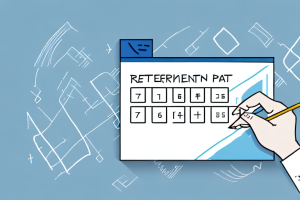Saving for retirement is a crucial part of financial planning, and it becomes even more important as you approach your 60s. At the age of 66, it becomes imperative to assess your financial situation and determine if you have saved enough to sustain yourself throughout retirement.
The Importance of Saving for Retirement
Retirement is a period of life when we have the opportunity to relax and enjoy the fruits of our labor. However, it also marks a transition from receiving a regular paycheck to relying on savings and investments to meet our financial needs. Therefore, it is essential to save for retirement to ensure financial security and maintain the lifestyle you desire.
One reason why saving for retirement is important is that it allows you to have a comfortable and worry-free future. By saving consistently over the years, you can build a substantial nest egg that will provide you with a steady income during your retirement years. This income can help cover your living expenses, healthcare costs, and any unexpected emergencies that may arise.
Another benefit of saving for retirement is the power of compound interest. When you start saving early and consistently, your money has more time to grow and benefit from compound interest. Compound interest is the interest earned on both the initial amount you save and the interest that accumulates over time. This means that your retirement savings can grow exponentially, allowing you to potentially retire with a larger sum of money than you initially saved.
Understanding the Financial Landscape for 66-Year-Olds
At the age of 66, many individuals are either already retired or on the verge of retirement. It is a time when people may still have various financial obligations, such as mortgage payments, healthcare expenses, or supporting their children or grandchildren. It is crucial to understand the financial landscape at this age to evaluate the adequacy of your savings.
Additionally, at the age of 66, individuals may also be eligible for various government benefits and programs, such as Social Security and Medicare. Understanding how these programs work and what benefits you may be entitled to can greatly impact your financial situation. It is important to research and consult with financial advisors or experts to ensure you are maximizing your benefits and making informed decisions about your retirement income.
Exploring the Average Savings of 66-Year-Olds
The average savings of a 66-year-old generally depend on several factors, including income, employment history, and financial choices made throughout their lifetime. According to research, the average savings for individuals aged 66 ranges from $100,000 to $300,000. However, these numbers can vary greatly depending on individual circumstances and financial planning habits.
It is important to note that the average savings mentioned above are just a general range and may not apply to every 66-year-old. Factors such as debt, medical expenses, and unexpected life events can significantly impact an individual’s savings. Additionally, the cost of living and inflation rates can also affect the purchasing power of these savings over time. Therefore, it is crucial for individuals approaching retirement age to carefully assess their financial situation and seek professional advice to ensure a secure and comfortable retirement.
Factors Influencing Savings at Age 66
Several factors play a significant role in determining the amount of savings individuals have at the age of 66. These factors include income levels, expenses, investment choices, debt levels, retirement plans, and unforeseen circumstances like medical emergencies or job loss. Understanding these factors can help individuals evaluate their financial situation and make necessary adjustments.
One important factor that can influence savings at age 66 is the individual’s income level. Higher income earners may have more disposable income to save and invest, while lower income earners may struggle to save due to limited resources.
Another factor to consider is the individual’s expenses. Those with higher expenses, such as mortgage payments, healthcare costs, or supporting dependents, may have less money available to save. On the other hand, individuals with lower expenses may have more flexibility to save a larger portion of their income.
Breaking Down Retirement Savings by Income Level
The level of income during working years directly impacts the amount of retirement savings individuals have at the age of 66. Those with higher incomes generally have the capacity to save more and accumulate a larger nest egg. However, it is important to note that income is not the only factor contributing to retirement savings, as financial habits and priorities also play a significant role.
One factor that can affect retirement savings is the cost of living. Individuals living in areas with a higher cost of living may have to allocate a larger portion of their income towards basic expenses, leaving less money available for saving. On the other hand, those living in areas with a lower cost of living may have more disposable income to put towards retirement savings.
Another factor that can impact retirement savings is access to employer-sponsored retirement plans. Individuals who have access to a 401(k) or similar retirement plan through their employer may have the opportunity to contribute pre-tax dollars and receive employer matching contributions, which can significantly boost their retirement savings. However, those without access to such plans may have to rely solely on individual retirement accounts (IRAs) or other personal savings vehicles.
How Much Should a 66-Year-Old Have Saved for Retirement?
There is no one-size-fits-all answer to this question, as the ideal amount of retirement savings varies based on individual circumstances. However, financial experts often suggest aiming for a retirement savings goal that provides approximately 70% to 80% of your pre-retirement income. This target accounts for factors such as inflation and potential healthcare costs.
It’s important to note that the suggested retirement savings goal of 70% to 80% of pre-retirement income may not be applicable to everyone. Factors such as lifestyle choices, desired retirement age, and expected expenses in retirement can greatly impact the amount needed. Additionally, it’s never too late to start saving for retirement, even if you’re already 66 years old. By making smart financial decisions and seeking professional advice, you can still work towards building a comfortable retirement nest egg.
The Impact of Lifestyle Choices on Retirement Savings
Our lifestyle choices directly impact our retirement savings. Spending habits, such as maintaining an extravagant lifestyle, supporting adult children financially, or excessive debt, can significantly reduce the amount of savings at the age of 66. It is crucial to prioritize savings and make conscious decisions to align our expenses with long-term financial goals.
Tips for Boosting Savings in Your 60s
If you find yourself behind on your retirement savings, there are still steps you can take to catch up in your 60s. Start by evaluating your current expenses and finding opportunities to cut back. Consider working for a few more years to increase your savings and delay Social Security benefits. Additionally, explore ways to maximize your investment returns, such as diversifying your portfolio or seeking professional advice.
Strategies for Catching Up on Retirement Savings at Age 66
Catching up on retirement savings at the age of 66 may require more focused strategies. Explore options like contributing to catch-up provisions in retirement accounts, such as IRAs or 401(k)s. Take advantage of employer match programs and consider downsizing your living arrangements to free up additional funds for savings.
Common Financial Mistakes to Avoid in Your Late 60s
As you approach your late 60s, it is crucial to avoid common financial mistakes that can impact your retirement savings. These mistakes may include dipping into retirement savings too early, taking excessive investment risks, or failing to account for healthcare costs. Stay informed, make sound financial decisions, and consult a financial advisor if needed.
Planning for Medical Expenses in Retirement at Age 66
Medical expenses can be a significant burden in retirement. At the age of 66, it is crucial to plan for healthcare costs and explore options like Medicare and supplemental insurance. Consider budgeting for potential long-term care expenses, as well as maintaining a healthy lifestyle to reduce healthcare costs in the long run.
Navigating Social Security Benefits and Retirement Savings at 66
At the age of 66, individuals become eligible for full Social Security retirement benefits. It is essential to understand how Social Security benefits interact with your retirement savings and develop a strategy to maximize your income. Consider factors like timing your Social Security claims, spousal benefits, and the impact on taxes.
Balancing Investments and Risk Tolerance in Your Late 60s
As individuals enter their late 60s, the approach to investments and risk tolerance may need to be adjusted. It becomes crucial to balance growth potential with preservation of capital. Reevaluate your investment portfolio and consider diversifying across various asset classes to manage risk while aiming for sustainable growth.
How to Determine if You Have Enough Saved for Retirement at Age 66
Determining if you have enough saved for retirement at age 66 requires a thorough assessment of your financial situation. Consider your expected retirement expenses, income sources, and the longevity of your savings. Use retirement calculators or consult a financial professional to evaluate if your savings can adequately cover your potential needs.
Exploring Alternative Options for Supplementing Retirement Income at 66
If your retirement savings fall short, exploring alternative options to supplement your income becomes crucial. Consider part-time employment, turning hobbies or skills into income-generating opportunities, or exploring reverse mortgages if you own a home. Evaluate these options carefully to ensure they align with your long-term goals.
Maximizing Tax Efficiency in Withdrawals from Retirement Accounts
When it comes to withdrawing funds from retirement accounts at the age of 66, it is essential to do so in a tax-efficient manner. Coordinate withdrawals with your Social Security benefits to minimize the impact of taxes. Consider consulting with a tax professional to develop a withdrawal strategy that optimizes tax efficiency and maximizes your retirement income.
The Role of Long-Term Care Insurance in Financial Planning at Age 66
Long-term care expenses can deplete retirement savings rapidly. At the age of 66, it is worth exploring long-term care insurance options to protect your savings from potential healthcare costs. Assess your health and family history, consider your financial circumstances, and determine if long-term care insurance is a suitable addition to your financial plan.
Strategies for Stretching Your Retirement Savings to Last a Lifetime
Stretching retirement savings to last a lifetime requires careful planning and resource management. Consider adjusting your spending habits, exploring ways to generate passive income, and staying vigilant about investment performance. Regularly reassess your budget, track your expenses, and make necessary adjustments to ensure your savings last as long as you need them.
Seeking Professional Advice: When to Consult a Financial Advisor at 66
At the age of 66, seeking professional advice from a financial advisor can provide valuable insights and guidance. A financial advisor can help you evaluate your retirement savings, develop a comprehensive financial plan, and navigate complex financial decisions. Consider working with a trusted advisor who specializes in retirement planning to ensure you make informed choices for your financial future.
In conclusion, the amount of savings an average 66-year-old has can vary greatly and is influenced by multiple factors. Consider your income, expenses, lifestyle choices, and long-term goals when evaluating your retirement savings at this age. Taking proactive steps to boost savings, manage risks, and make informed financial decisions can help ensure your financial security throughout retirement. It’s never too late to start planning and working towards a comfortable and fulfilling retirement.



